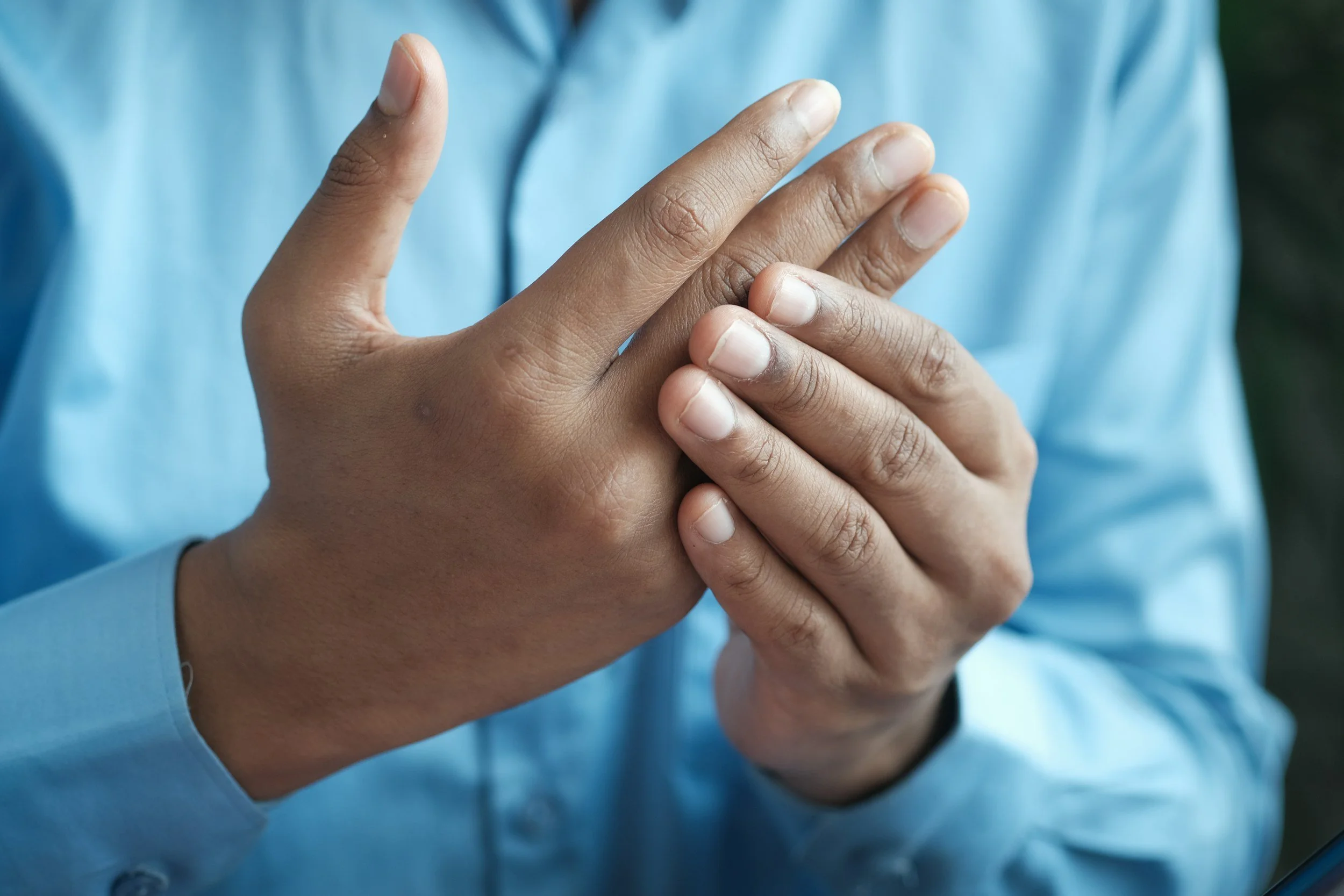EXERCISE TYPES AND TIPS TO HELP WITH ARTHRITIS. MOTION IS LOTION.
Rheumatoid arthritis is a very common condition that can be managed with exercise.
Learn Why You Should Be Exercising with Arthritis
Living with arthritis can feel challenging, especially when pain and stiffness make it hard to stay active. But here’s something surprising, regular exercise is one of the best things you can do to manage arthritis! While it may seem counterintuitive to move when your joints hurt, exercise can actually help reduce pain, increase flexibility, and improve your overall quality of life.
In this blog, we’ll explore the benefits of exercise for arthritis and share some simple exercises you can do to stay active and keep your joints happy.
For further information click here https://www.arthritis.org/ (Arthritis Foundation)
Why Exercise Is Important for Arthritis
When you have arthritis, the joints become inflamed, causing pain, stiffness, and sometimes swelling. Over time, this can lead to decreased mobility and muscle weakness around the affected joints. Staying active helps manage these symptoms in a variety of ways:
Reduces Joint Pain
Regular movement lubricates the joints with synovial fluid, which helps reduce stiffness and pain. Exercise also strengthens the muscles surrounding your joints, providing better support and reducing strain on the joints themselves.Improves Flexibility and Range of Motion
Gentle stretching and mobility exercises can help improve your range of motion, making it easier to move your joints through their full range. This helps prevent stiffness and keeps you moving freely in your daily activities.Boosts Energy and Mood
Living with arthritis pain can sometimes make you feel fatigued or low in energy. Exercise helps boost energy levels by improving blood circulation, and it releases feel-good endorphins that can elevate your mood and combat feelings of depression or frustration that often accompany chronic pain.Helps Maintain a Healthy Weight
Carrying extra weight puts additional stress on your joints, particularly in the knees, hips, and lower back. Regular physical activity helps maintain a healthy weight, reducing the pressure on your joints and decreasing pain.Prevents Further Joint Damage
While arthritis can cause joint damage, staying inactive can make things worse. When you don’t move, your muscles weaken, and your joints become stiffer. Regular exercise helps maintain joint health, slows down the progression of arthritis, and prevents additional damage.
Types of Exercise for Arthritis
When it comes to arthritis, not all exercises are created equal. The best exercises are those that are gentle on your joints while still promoting strength, flexibility, and overall fitness. Here are four key types of exercises that are especially beneficial for arthritis:
Range-of-Motion Exercises
These exercises help improve flexibility and reduce stiffness in your joints by gently moving them through their full range of motion. Range-of-motion exercises are especially helpful in the morning when joints tend to feel stiff.Example: Wrist circles, shoulder rolls, or ankle rotations. Try doing 5-10 gentle repetitions of each.
Strengthening Exercises
Strengthening the muscles around your joints helps support them, reducing pain and making it easier to perform daily tasks. Strength exercises can be done using your own body weight, resistance bands, or light weights.Example: Seated leg lifts, wall push-ups, or resistance band exercises. Aim for 10-12 repetitions of each exercise.
Aerobic (Cardio) Exercises
Low-impact cardio exercises improve your cardiovascular health, increase stamina, and help maintain a healthy weight. These exercises also release endorphins that naturally reduce pain.Example: Walking, swimming, or cycling. Start with 10-15 minutes of light aerobic activity and gradually increase the duration as you feel comfortable.
Stretching and Flexibility Exercises
Stretching helps improve flexibility and reduce tension in the muscles and joints. Regular stretching can prevent stiffness and help you move more easily.Example: Gentle yoga, hamstring stretches, or calf stretches. Hold each stretch for 20-30 seconds, and repeat 2-3 times.
Tips for Exercising with Arthritis
Start Slow: If you’re new to exercise or having a flare-up, start with shorter, gentler sessions, and gradually increase the intensity and duration as your body adapts.
Listen to Your Body: It’s important to know the difference between normal muscle soreness and arthritis pain. If something feels too painful, stop and modify the exercise.
Warm-Up and Cool Down: Always warm up before exercising to get your joints moving and cool down afterward to stretch and relax your muscles.
Stay Consistent: Aim for regular, short sessions of exercise rather than occasional long ones. Consistency is key to seeing improvements in joint mobility and pain relief.
Motion is Lotion
Exercise is a powerful tool for managing arthritis symptoms and improving overall well-being. With the right approach, you can reduce pain, improve flexibility, and stay active and independent for longer. Whether you’re dealing with mild discomfort or more advanced arthritis, finding a routine that works for you is essential.
If you’re unsure where to begin or need help designing a personalized exercise plan for arthritis, consulting with an Exercise Physiologist can be a great first step. At JY Exercise Physiology, we specialize in creating custom routines tailored to your needs, ensuring that you move safely and effectively.
Ready to move better and feel better with arthritis? Contact JY Exercise Physiology today to schedule a consultation and start your personalised exercise plan!
Get In Touch
Are you ready to take the next step in treating your Arthritis ? Get in touch JY Exercise Physiology for a tailored exercise program ! Located in Upper Mount Gravatt and speak with an Accredited Exercise Physiologist now. Our free consultation provides an opportunity to discuss how I can facilitate your needs.
Feel free to explore our other blogs to learn more and gain additional insights.
Call +61 421 967 711

